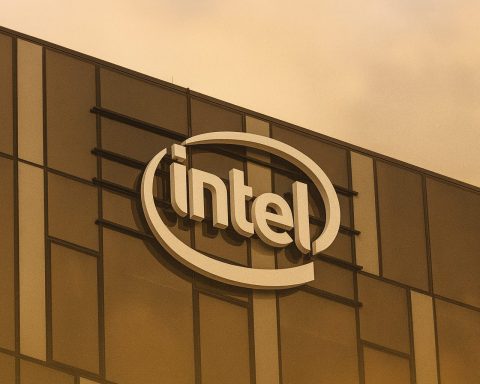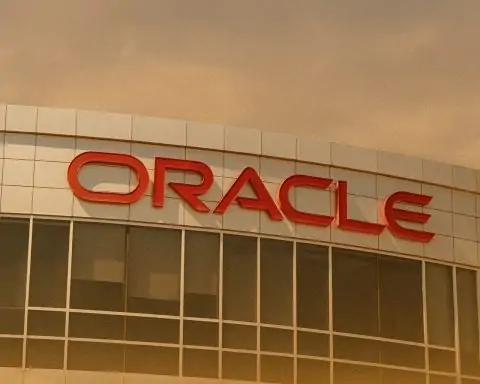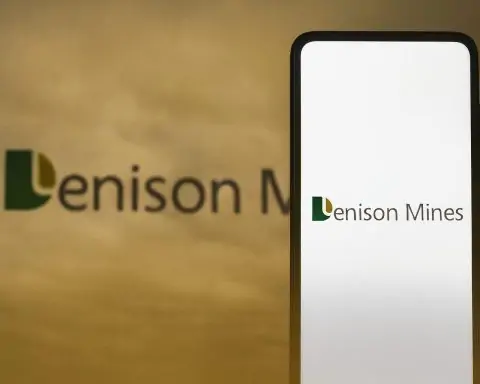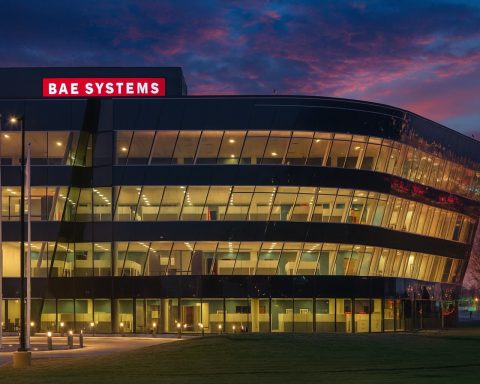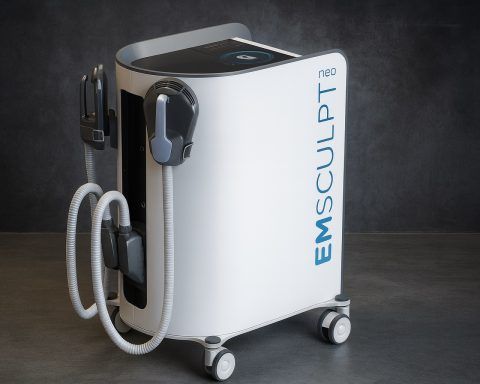- Delphi is Lux Aeterna’s flagship fully reusable satellite bus designed to launch, operate in orbit, return to Earth, be refurbished, and relaunched.
- The Delphi demonstrator weighs about 200 kg and will carry a customer payload to low Earth orbit before re-entering and landing for recovery.
- Lux Aeterna has raised $4 million in pre-seed funding, led by Space Capital, to develop Delphi.
- A demonstration mission is planned for early 2027, launched as a rideshare on SpaceX’s Falcon 9.
- Delphi’s heat shield is integral to its structure, with the shield forming the main load-bearing body to survive multiple reentries.
- The design features a rigid, conical heat shield front end, reminiscent of NASA’s Apollo capsules, and avoids deployables or inflatables.
- In flight, Delphi will look and operate like a conventional satellite, but for reentry it uses on-board propulsion to orient and initiate descent, and an initial demo will deploy a parachute.
- Lux Aeterna aims to land on solid ground rather than an ocean splashdown, with FAA collaboration for flight safety and designated landing sites.
- The business model is satellite-as-a-service, where customers lease time on the Delphi bus and only pay for on-orbit usage, with a first production version targeting 15 missions or 15 years.
- The U.S. DoD has shown interest in Delphi for rapid-refresh and recoverable satellites, signaling potential military applications for tactical response and resilience.
Satellites have long been treated as disposable assets – after completing their missions, they either burn up during reentry or become lifeless space junk in “graveyard” orbits. This paradigm is now being challenged by a new generation of spacecraft designed for multiple missions. Lux Aeterna, a Denver-based startup emerging from stealth mode in mid-2025, has unveiled “Delphi”, a fully reusable satellite platform intended to launch, operate in orbit, and then return to Earth intact for refurbishment and relaunch [1] [2]. If successful, Delphi could dramatically slash the cost of deploying payloads to space and introduce unprecedented flexibility by allowing satellites to be reconfigured or repurposed between missions [3] [4]. This report provides a deep dive into Lux Aeterna’s Delphi platform – its technological innovations, mission architecture, and aircraft-like landing capability – and examines the broader rise of fully reusable satellites. We will compare Delphi to other efforts (SpaceX, Sierra Space, Rocket Lab, and more), review the historical evolution of reusability in spacecraft, and explore the commercial, defense, and scientific implications of this emerging technology.
Lux Aeterna’s Delphi: Pioneering a Fully Reusable Satellite Bus
Lux Aeterna’s flagship platform, Delphi, is poised to become the world’s first fully reusable satellite bus. The company raised an initial $4 million pre-seed funding (led by Space Capital) to develop Delphi, with a demonstration mission planned for early 2027 [5] [6]. Weighing about 200 kg, the Delphi demonstrator will carry a customer payload to low Earth orbit, then safely re-enter the atmosphere and land on Earth for recovery [7]. Uniquely, Delphi is designed from the ground up with reusability in mind, integrating reentry systems into the satellite’s very structure. “Instead of adding a heat shield to an existing satellite, we build the entire satellite… around this main structure, which is the heat shield,” explains Brian Taylor, Lux Aeterna’s founder and CEO [8]. In other words, Delphi will look and act like a normal satellite on launch, but it carries its own protection to survive the fiery trip back from orbit. Lux Aeterna’s concept render (released with their June 2025 debut) shows Delphi as a compact spacecraft dominated by a blunt, conical front end – a rigid heat shield reminiscent of NASA’s Apollo capsules and other proven reentry vehicles [9].
Delphi’s mission profile will mark a historic first for satellites. Launched via a rideshare on SpaceX’s Falcon 9 rocket in 2027, Delphi will deploy to orbit and carry out its mission like any other satellite [10]. But when the mission is complete – whether after a few days or months – Delphi will de-orbit itself and descend back to Earth. The spacecraft uses on-board propulsion to orient and initiate reentry [11]. As it plummets through the atmosphere, the heat shield – which doubles as the satellite’s structural core – will protect it from extreme heating [12]. In the final descent phase, a parachute will deploy to slow Delphi for a gentle landing on land [13] [14]. Lux Aeterna is working with the U.S. FAA on a flight safety analysis for recovery, and while details are still under wraps, the plan is to land on solid ground rather than an ocean splashdown [15]. In essence, Delphi aims to return from orbit and land almost like an aircraft returning to a runway, ready to be retrieved. After landing, engineers will refurbish the satellite, integrate a new payload, and prepare it for another launch – demonstrating that the same satellite bus can fly, return, and fly again [16] [17].
Such “rocket-like reuse” for orbital assets is a radical shift from the status quo [18]. Today, even the most advanced satellites are single-use – they either burn up at end-of-life or require costly on-orbit servicing to extend their utility. Lux Aeterna’s CEO Brian Taylor, who previously worked on SpaceX’s Starlink constellation and Amazon’s Project Kuiper, saw this disposable model’s limitations firsthand [19] [20]. “While the satellite industry has evolved rapidly, its core infrastructure is still designed to be disposable,” Taylor notes [21]. Delphi’s reusable platform flips that paradigm, potentially making Delphi the first satellite in history to ever fly to space twice [22] [23].
Design Innovations: Heat Shields, Folding Structures, and NASA-Inspired Tech
Building a satellite capable of surviving multiple reentries is an immense engineering challenge. Reentry from orbit exposes a vehicle to intense heat (over 1,500°C), extreme aerodynamic forces, and shock stresses that typical satellites are not built to withstand. Lux Aeterna’s approach borrows from the playbook of crew capsules and sample-return probes: Delphi features a robust ablative heat shield with a conical shape, similar to those that protected NASA’s Apollo spacecraft and other missions [24]. “Those designs worked,” Taylor emphasizes, explaining that the team studied NASA’s past exploratory and sample-return missions to justify Delphi’s architecture [25]. By using a rigid heat shield as the primary structure of the satellite (rather than bolting one on as an afterthought), Delphi can dissipate reentry heat reliably and repeatedly [26]. Notably, Lux Aeterna deliberately avoids exotic inflatable heat shields or other unproven concepts; “we’ve chosen a simple and robust heat shield architecture that does not include deployables or inflatables, to ensure a safe and predictable re-entry,” Taylor says [27]. The heat shield material and design are being developed and tested in-house – an effort so central that Lux Aeterna’s Denver facility is described as “a major hub for heat shield development” [28].
One intriguing aspect of Delphi’s design is how the satellite’s bus components (like avionics, solar arrays, etc.) fit behind the heat shield during reentry. According to TechCrunch, the Delphi architecture appears to allow the satellite’s structures to fold or stow in the shadow of the heat shield for protection during the fiery plunge [29]. This likely means that any appendages (antennas, solar panels) retract or are otherwise safeguarded as Delphi heads home. In orbit, however, Delphi is meant to function just like a conventional satellite, with a familiar form factor and operations. “One of the keys here is that when you launch it, it looks and feels and acts like a satellite. It’s not a capsule, it’s not a space plane,” Taylor explains [30]. Keeping Delphi’s on-orbit profile similar to existing satellites lowers the adoption barrier – satellite operators can interface with it as they would with any other spacecraft, without needing special accommodations [31].
Another innovation is Delphi’s guidance and control for reentry and landing. Unlike crew capsules that usually land via parachute in remote areas, Lux Aeterna hints at a more targeted recovery. The company is coordinating with regulators for safe reentry corridors [32], and Taylor has only revealed that Delphi will be “landing on land” – suggesting the possibility of precision landings perhaps at designated spaceports or test ranges [33]. For its first demo, a parachute will be used [34] [35], but as the technology matures, one could imagine Delphi eventually using steerable parafoils or even landing gear for runway touchdowns (much like some military return vehicles). Onboard propulsion will play a role in guiding Delphi’s descent, ensuring it can line up with the planned landing zone [36]. All these systems must function autonomously and reliably, given that Delphi will come down uncrewed. Lux Aeterna’s team – which includes veterans in satellite production and “hot structures” (high-temp materials) – has been intensely prototyping and testing these components under stealth mode prior to the June 2025 reveal [37] [38].
It’s worth noting that Lux Aeterna is not alone in tackling reentry innovations for reusable satellites. In the UK, for example, startup Space Forge is developing the “Pridwen” deployable heat shield, a high-temperature alloy shield that folds origami-style around a satellite and unfolds for reentry [39] [40]. Like Lux Aeterna, Space Forge aims to make satellite returns routine; their heat shield is designed to be fully reusable, radiating away heat without ablating, and large enough to keep the spacecraft safe [41]. Space Forge pairs this with a gentle recovery method – a system called “Fielder,” essentially a hovering water-based catch system to soften landings on the ocean [42] [43]. These approaches underscore a broader trend: reentry technology is advancing, with engineers finding creative solutions to bring satellites back intact. Lux Aeterna’s Delphi chooses a rigid, integral heat shield approach (prioritizing simplicity and proven capsule geometries), whereas Space Forge uses a fold-out shield and special catcher to minimize shock on delicate manufactured materials. Both paths reflect the new “reusable satellite” mindset, where surviving reentry is a core requirement rather than an afterthought.
Mission Architecture and Business Model: Reuse, Refurbish, Repeat
While Delphi’s engineering is revolutionary, its operational concept and business model are equally innovative. Lux Aeterna envisions a future where satellites are not one-off hardware purchases, but rather reusable platforms that clients rent like a service, paying for “time on orbit” the way one might lease an aircraft or data server [44] [45]. With Delphi, a customer (be it a company, government agency, or research institution) could book a mission of a certain duration and fly their payload on the satellite. At the end of that period, Delphi comes back down. If the mission needs to continue, it could be re-launched; if not, the same Delphi unit can be reconfigured for a new customer’s payload and mission. [46] [47]
Brian Taylor likens this to fundamentally changing the economics of space access. “Even if you make a kajillion of something, you have to pay for material. The only way to get below that number is reuse,” he said, referencing his experience mass-producing Starlink satellites at SpaceX [48]. In other words, no matter how much you scale up manufacturing of disposable satellites, a floor on cost exists (materials, fabrication, etc.). Reusing the hardware across missions breaks through that floor. Lux Aeterna’s goal is to drive per-mission costs lower than the raw material cost of an equivalent one-use satellite [49]. Over multiple flights, the upfront build cost of Delphi gets amortized, potentially yielding huge savings for frequent flyers. According to Taylor, the first production version of Delphi (after the 2027 demo) is being designed for a lifespan of 15 missions or 15 cumulative years in orbit – whichever comes first [50]. This durability target (15 re-flights) is ambitious, echoing the kind of reuse numbers seen in SpaceX’s Falcon 9 boosters (some of which have flown 10–15 times). The actual refurbishment process between Delphi missions is still secret; Taylor declined to detail how they will service the satellite between flights [51]. Ideally, the turnaround would be quick and inexpensive, involving minimal component replacement. Indeed, Lux Aeterna’s aim is that “nothing on the satellite has to be replaced after every mission”, barring perhaps the fuel expended or minor consumables [52].
From a customer perspective, a reusable satellite opens up new possibilities beyond cost savings. One compelling use case is in-space experimentation and manufacturing – fields that benefit from sending stuff to orbit and then getting it back. For example, materials science startups and biotech companies are interested in microgravity manufacturing of high-value products (semiconductors, crystals, pharmaceuticals). With Delphi, a company could fly a manufacturing payload for a few weeks or months, then retrieve the processed product on Earth for analysis or sale. Lux Aeterna explicitly highlights in-space manufacturing firms as target customers who “need reliable return with meaningful mass and power capabilities” – something Delphi offers as a “modular platform” that can go up and come down on demand [53]. Similarly, technology demonstration is a key market: a smallsat startup testing a new sensor or chip in space might only need a short mission to gather data and prove it works. Instead of committing to a multi-year satellite or risking losing the hardware, they could lease Delphi for, say, a one-month on-orbit test and then get their payload back. This not only builds flight heritage quickly but also lets the developer physically inspect and iterate on their hardware after the spaceflight, shortening the R&D cycle [54]. Lux Aeterna describes this as providing “exclusive use of a physical satellite in LEO” for a timeframe the customer chooses, without having to buy that satellite outright [55].
Another advantage is risk mitigation. If a traditional satellite fails early in its mission (say a payload malfunctions after 6 months even though it was meant for 5 years), the operator typically has to write off the entire mission. With Lux Aeterna’s model, if a payload fails or a mission is cut short, the satellite bus can be brought back down and the customer can stop paying for it mid-stream [56]. This “pay for what you use” approach could make satellite missions more financially resilient. As Payload News notes, if a payload fails at month 6, “Lux Aeterna can bring down the bus, and the payload operator can stop paying its lease” from that point [57]. Such flexibility is unheard of in current satellite contracts.
Beyond commercial uses, the U.S. Defense Department is eyeing Delphi’s capabilities closely. The Pentagon has been shifting toward smaller satellites in low Earth orbit for resilience and responsiveness, and Delphi adds a new twist: the ability to rapidly refresh or reposition space assets and avoid supply chain chokepoints [58]. Brian Taylor mentions that the Department of Defense (DoD) has shown interest in how Delphi could enable “a new take on tactical response” with recoverable satellites [59]. In a military context, one can imagine scenarios like: deploying a surveillance payload for a short-term operation, then returning it to prevent it from being intercepted or to quickly upgrade it with new sensors for the next sortie. The DoD also faces the challenge of space hardware production lines – if a conflict or urgency arises, churning out dozens of new satellites (even small ones) can be time-consuming and subject to supply chain delays. A fleet of reusable satellite buses that can be launched on short notice, perform a mission, and be cycled back for reuse would provide a form of responsive space capability not reliant on constantly manufacturing new satellites [60]. This aligns with the military’s broader push for agility in space operations.
Lastly, the sustainability implications of reusable satellites are significant. Lux Aeterna often highlights the environmental angle: every satellite that is reused is one less piece of orbital debris or upper-atmospheric junk. Today, defunct satellites either clutter orbits (adding to collision and debris risks) or burn up, which not only wastes hardware but can have environmental side effects, such as depositing alumina particles that may affect the ozone layer [61] [62]. “Orbital debris and sustainability challenges will only intensify over time,” Taylor warns, arguing that a reusable platform provides a “comprehensive solution” by addressing the economic needs of new space ventures while also tackling environmental concerns [63]. In short, Delphi could help make the space industry more circular: reducing waste and preventing discarded satellites from polluting space or air.
Comparing Delphi to Other Reusable Space Efforts
Lux Aeterna’s Delphi is part of a larger wave in the aerospace industry: an embrace of reusability to cut costs and increase capability. However, different players are tackling reusability at different segments of the space supply chain – rockets, spaceplanes, and now satellites. Here’s how Delphi compares and contrasts with efforts by SpaceX, Sierra Space, Rocket Lab, and others:
- SpaceX: Reusable Rockets (and Maybe One Day, Reusable Satellites?) – SpaceX pioneered modern space reusability with the Falcon 9 rocket, proving that booster stages can be flown repeatedly (some boosters now have 15+ flights). This “fly, recover, fly again” philosophy dramatically lowered launch costs, setting a template that Lux Aeterna explicitly seeks to emulate for satellites [64] [65]. In fact, Brian Taylor credits SpaceX’s Falcon 9 and his time as a Starlink engineer for inspiring Lux Aeterna; Falcon 9 showed that “the only way to go [below the cost of materials] is reusability” [66] [67]. Where SpaceX focuses on reusing the launch vehicle, Lux Aeterna shifts the focus to the spacecraft itself. SpaceX’s other big project, Starship, is a fully reusable spacecraft and booster system that could carry massive payloads. Interestingly, Starship’s huge launch capacity makes concepts like Delphi more feasible – heavy-lift rockets can afford the mass and volume for robust heat shields and recovery hardware [68] [69]. Taylor recounts that watching a Starship test flight gave him the idea for Lux Aeterna: “I want to fill Starship with something amazing, something that changes the entire industry,” he told TechCrunch [70] [71]. SpaceX itself has not announced reusable satellites (its Starlink satellites are still disposable, focusing on mass-production), but SpaceX’s ethos of vertically integrating and rethinking old assumptions clearly influences startups like Lux Aeterna. It’s also conceivable that in the future, a vehicle like Starship could retrieve satellites or host experiments and return to Earth, similar to what the Space Shuttle did – though SpaceX’s immediate plans are more about delivering cargo and humans and returning the Starship, not the satellites. In summary, SpaceX demonstrated the economic payoff of reusing rockets, and now Delphi aims to bring that same revolution to the satellite bus – “Falcon 9 showed that pretty well,” notes Taylor [72].
- Sierra Space: Dream Chaser Spaceplane – While Lux Aeterna insists Delphi “is not a space plane” but a satellite [73], its ability to return from orbit naturally invites comparison to winged orbiters like Sierra Space’s Dream Chaser. Dream Chaser is a reusable lifting-body spaceplane roughly 9 meters long, designed to carry cargo (and eventually crew) to the International Space Station and back. Slated for its first orbital flight in 2024–2025, Dream Chaser will land on a runway like an aircraft, offering a gentle 1.5 G descent that’s friendly for sensitive cargo and experiments. In many ways, Dream Chaser is the spiritual successor to the Space Shuttle, but at a smaller scale and with modernized systems. The key commonality with Delphi is full reuse and runway recovery – both vehicles avoid burning up and instead come back intact. However, Dream Chaser is essentially a small reusable spacecraft for transport, not a satellite to leave in orbit long-term. It will deliver and return cargo for NASA, and potentially deploy or retrieve payloads (for example, it could release small satellites and later return microgravity experiment samples to Earth). Dream Chaser’s manufacturer Sierra Space is also developing on-orbit infrastructure (like the Orbital Reef space station with Blue Origin) and has a line of satellite products. In fact, Sierra Space advertises a “next generation of high-performance satellites” for missions like on-orbit servicing and national security, leveraging its 30-year heritage in space systems [74] [75]. While details are scarce, Sierra’s satellite line presumably complements its spaceplane and station efforts, possibly by providing persistent platforms in orbit that could be serviced or upgraded. Unlike Delphi, Sierra’s satellites are not known to be physically recoverable; instead, Sierra is likely focusing on modular design and maybe robotic servicing compatibility. So, Delphi vs. Dream Chaser reflects two different reusable paradigms: Delphi is a satellite bus that hosts missions and returns itself, whereas Dream Chaser is a mini-shuttle that can ferry separate payloads or satellites to and from orbit. Both will contribute to a future where hardware is reused and missions can be shorter and more purpose-specific. Notably, both also have drawn DoD interest – Dream Chaser’s flexibility has clear military appeal (Sierra has pitched a variant for defense applications), just as Delphi’s responsiveness does [76].
- Rocket Lab: Partially Reusable Launchers & Satellite Services – Rocket Lab, a smaller launch provider, has been pushing reusability on its Electron rocket and developing the larger Neutron rocket with full reuse in mind. Electron pioneered an unusual method of first-stage recovery (using parachutes and even mid-air helicopter capture in tests) and by late 2023 had succeeded in recovering boosters for inspection [77]. Neutron, expected to debut ~2025, is explicitly designed as a medium-lift reusable rocket, with plans to land its first stage propulsively on a sea platform and potentially make the second stage reusable or integrated (Neutron’s design features a captive “mega fairing” that acts as a reusable shell for the upper stage and payload) [78] [79]. While Rocket Lab’s focus is on launch vehicle reuse (akin to a mini-SpaceX), it has also evolved into an “end-to-end space company” offering satellite manufacturing and mission services [80]. Rocket Lab’s Photon satellite bus is an example – essentially a modified upper stage that can carry payloads in orbit for missions (like the CAPSTONE lunar orbiter for NASA). Photon is not reusable (it stays in space or eventually deorbits), but Rocket Lab’s broader strategy hints at integrating launch and satellite operations. Where might Rocket Lab intersect with Lux Aeterna’s domain? Possibly in offering flexible mission options. For instance, Rocket Lab could launch a Photon or smallsat for a brief mission and then deorbit it – but that photon is expended. With Delphi, a similar mission could end with the satellite coming back for reuse. Rocket Lab hasn’t announced plans for recovering satellites or upper stages yet (besides early speculation of catching Electron’s second stage, which proved impractical). However, as reusability becomes a competitive advantage, it’s plausible that companies like Rocket Lab might consider partnerships or their own programs for reusable satellite buses. For now, Delphi stands out as unique, but it complements Rocket Lab’s reuse philosophy: reduce waste, reduce cost. And notably, Lux Aeterna plans to utilize the existing launch ecosystem (Falcon 9 in particular) to get Delphi to orbit [81] – they are not building rockets, so companies like Rocket Lab (or SpaceX, or others) are partners rather than competitors in the launch phase. The rise of readily-available, cost-effective launch (thanks to reusable rockets) is a key enabler for Delphi’s business case [82].
- Other Notable Efforts: X-37B, Space Rider, and Beyond – In the realm of reusable spacecraft, a few other projects deserve mention for context. The Boeing X-37B is a secretive unmanned spaceplane operated by the U.S. Space Force that has flown multiple long-duration missions. Roughly the size of a small bus, the X-37B launches on a rocket, conducts classified experiments in orbit for months to years, and then returns to Earth to land on a runway autonomously. It is fully reusable – the same vehicles have flown several missions, with one staying in space for a record 908 days before landing in 2022. The X-37B’s existence (since 2010) demonstrated that uncrewed reusable orbital vehicles are feasible and can be turned around for multiple flights (its exact refurbishment timeline is secret but clearly it has re-flown). The X-37B, however, is not commercially available and not a general-purpose satellite bus; it’s a military test platform. ESA’s Space Rider is another forthcoming reusable space vehicle – essentially Europe’s version of a small robotic shuttle. Based on the IXV experimental lifting body tested in 2015, Space Rider will launch on a Vega-C rocket and is designed to stay in orbit for a couple of months hosting microgravity experiments, then reenter and land with the help of a parafoil and airbags (a runway landing without wheels) for recovery and reuse up to 6 times. Its first flight is expected around 2025-2026. Space Rider is aimed at scientific and commercial payloads that need return to Earth, quite analogous to Lux Aeterna’s goals. The difference is Space Rider is a wingless lifting body with a prescribed form factor, whereas Delphi is a more modular satellite bus that could be tailored to each mission and is smaller (Space Rider can carry ~800 kg of payload). We also have India’s Reusable Launch Vehicle-Technology Demonstrator (RLV-TD) – while primarily a program to develop a reusable launch vehicle, the RLV-TD looks like a small spaceplane and India has tested its gliding return and autonomous landing in 2023 (from a suborbital test). In the future, such spaceplanes might be used for orbital missions or even deploy and return satellites. All these efforts underscore a trend: the industry is reviving and modernizing concepts of reusability first popularized by the Space Shuttle. Where the Shuttle was a large, crewed orbiter that proved expensive to refurbish, these new projects (X-37B, Dream Chaser, Space Rider, Delphi) are smaller, nimbler, and focused on uncrewed, application-specific reusability – whether for defense, cargo, or satellite operations.
Historical Trajectory: From “Disposable” Spacecraft to a Reusable Era
To appreciate how groundbreaking fully reusable satellites like Delphi are, it’s useful to look at the historical arc of spacecraft reusability:
In the early Space Age, virtually all vehicles were expendable. One exception was the recovery of film canisters from spy satellites: the 1960s CORONA program, for example, ejected film return capsules from orbit, which reentered and were caught mid-air by aircraft. Those capsules (like the Discoverer series) proved that small payloads could survive reentry, but the satellites themselves were still one-time-use, and the recovered capsules generally weren’t reused (they just delivered film). The Soviets also flew a series of Bion and Foton satellites from the 1970s through 2000s that carried biological and materials science experiments; these were essentially capsules that spent weeks in orbit then returned their experiments to Earth. Each Bion/Foton capsule was used once, but the program showed the value of returning payloads – many advances in space-based manufacturing and biotechnology came from these missions.
The biggest leap in reusability came with NASA’s Space Shuttle program (1981–2011). The Shuttle orbiters were partially reusable spaceplanes that could launch like a rocket (with booster and tank help) and land on a runway. Over 135 missions, each orbiter was reused dozens of times. The Shuttle also showcased on-orbit servicing and retrieval: astronauts repaired satellites like Solar Max and even brought damaged satellites (e.g. Palapa B2 and Westar VI in 1984) back to Earth in the Shuttle’s cargo bay for refurbishment. This led to a few satellites actually getting a second life – those two rescued communications satellites were refurbished and relaunched, technically making them among the only satellites to fly to space twice prior to Delphi’s era. However, the Shuttle system’s extreme complexity and cost prevented routine reusability from taking hold industry-wide. Post-Shuttle, focus shifted back to simpler expendable rockets – until SpaceX proved in 2015–2017 that modern technology could land and reuse boosters economically.
During the Shuttle years and after, various uncrewed reusable vehicle concepts were explored. NASA’s X-37 (originally a NASA project, later handed to DARPA and USAF) eventually became the aforementioned X-37B program. There were also concepts like the Orbital Space Plane in the early 2000s (canceled) and multiple space tourism spaceplane prototypes (like SpaceShipOne, though suborbital). None addressed satellite reusability directly, but they kept the idea of reusable spacecraft alive. In parallel, the field of on-orbit satellite servicing emerged: companies like Orbital ATK (now Northrop Grumman) developed vehicles like the Mission Extension Vehicle (MEV), first used in 2020 to dock with an aging commsat and extend its life by taking over propulsion. Servicing is a way to reuse the function of a satellite by refueling or repairing it in orbit, but the hardware stays upstairs. Reusable satellites like Delphi take a more dramatic approach – bringing the hardware back for refurb on the ground.
Now in the mid-2020s, advances in materials, miniaturization, and automation have converged to make something like Delphi feasible. Heat shield materials are better (e.g., SpaceX’s PICA-X ablative used on Dragon capsules, or new high-temp alloys like Space Forge’s Pridwen shield) [83] [84]. Electronics can be radiation-hardened and built rugged to survive multiple launches and reentries. Precision guidance (GPS, AI-based control) allows pinpoint landings that early engineers could only dream of. And importantly, launch cost has plummeted, meaning we can afford to lug “extra” weight like a heat shield or parachute on a satellite because the price per kilogram to orbit is no longer prohibitive [85]. Heavy-lift rockets (Falcon Heavy, Starship soon, New Glenn on the horizon) open the door to launching reentry-capable satellites without major compromises [86] [87]. As Taylor noted, bigger rockets provide the volume and mass budget to “build one [a satellite] that can survive multiple re-entries without having to compromise on the technology because of cost or weight trade-offs” [88]. In short, we’ve arrived at a technological moment where reusability doesn’t automatically mean sacrificing performance or blowing up the budget.
Implications for Commercial, Defense, and Scientific Sectors
The advent of fully reusable satellites like Delphi – and the broader shift toward reusable space systems – will reverberate across various sectors:
- Commercial Impact – Lower Costs & New Services: For the commercial satellite industry, reusability promises a step-change in economics. By reusing satellite buses, operators could see significantly reduced capital expenditure per mission over the long run [89]. This could lower the barrier to entry for space services: smaller companies might afford missions by leasing time on a reusable bus instead of financing an entire satellite build. Lux Aeterna’s flexible leasing model, where cost “aligns with time on station,” introduces cloud-computing-like scalability to space – customers pay only for what they need [90] [91]. We might see “satellite-as-a-service” offerings flourish, where a constellation of reusable satellites can be dynamically allocated to different clients over time. It also incentivizes satellite makers to focus on longevity and quality, since the hardware isn’t a one-off throwaway. Competition could emerge between the reuse model and the mass-production model (exemplified by OneWeb or Starlink making hundreds of expendable satellites). If Delphi proves more cost-effective beyond a certain flight rate, even companies now focused on mass production might pivot to reuse. Additionally, launch providers may benefit: reusable satellites would still need frequent launches (since they come back and need to go up again). This could increase launch cadence and demand, especially for smaller launchers that could redeploy a returned satellite to a new orbit or mission quickly. In the long run, a successful reusable satellite ecosystem could drive a virtuous cycle of falling costs and increased space utilization, expanding the market with novel applications that were previously uneconomical (short-term observation campaigns, temporary communications nodes for events or disaster relief, etc.).
- Defense and National Security – Responsiveness & Resilience: The military implications of fully reusable satellites are profound. As mentioned, the DoD is interested in Delphi for tactical responsiveness [92]. Imagine having a stable of ready-to-launch satellite buses that can be rapidly configured with mission-specific payloads (imaging sensors, communications relays, electronic warfare packages) and launched on demand. After completing their mission (which could be days or months), these could be brought back, refitted, and prepped for the next assignment. This dramatically compresses the timeline for space mission turnaround compared to procuring new satellites each time. It also provides a way to physically secure or upgrade sensitive payloads – for example, if one fears that an adversary might tamper with or cyber-attack a satellite, being able to pull it out of orbit is a new strategic capability. Reusable satellites could enhance training and exercises as well; the military could practice deploying and recovering assets routinely, building a wartime surge capacity. In terms of resilience, reusables complement the trend of proliferated LEO constellations: a swarm of small satellites is hard to completely knock out, and if some are reusable, they add a layer of redundancy (they can replace others or quickly fill gaps). There’s also the matter of supply chain security – satellites involve complex supply lines. In a crisis, manufacturing new satellites might hit bottlenecks (certain chips or sensors). Reusing existing satellites reduces dependence on constant production and can buffer against industrial base limitations [93]. Finally, intelligence missions stand to gain: currently, spy satellites must either send data down or physically return film (old style) – but a reusable satellite might carry certain collected materials or data storage devices physically back to Earth if needed, ensuring absolutely secure transport of information (though most cases don’t require that extreme). Overall, the military could integrate reusable satellites into an adaptive space architecture that blends persistent assets with surge-on-demand assets that deploy and redeploy as needed.
- Scientific Research & Exploration: Scientists often have goals that align perfectly with reusable satellites. Consider microgravity research: Many experiments (growing protein crystals, testing new alloys, even life science studies on cells) benefit from being in space and then being examined back on Earth. A reusable satellite laboratory that can go up, run experiments, and return samples intact could revolutionize materials science and pharmaceutical research. We’ve already seen companies preparing for this – e.g. Space Forge’s focus on in-orbit fabrication of “supermaterials” and then recovering them for use on Earth [94] [95]. Andrew Bacon, CTO of Space Forge, said that fully reusable manufacturing satellites could “kick start a new industrial revolution” by making space-made products economically viable [96]. Reusable platforms like Delphi and Space Forge’s ForgeStar are key to that vision. On a broader exploration front, having reusable satellite buses might aid planetary missions too – while Delphi itself is designed for Earth orbit, the tech developed (like durable heat shields) could apply to reusable lunar or Mars orbiters or sample-return craft. NASA and others could potentially adapt the concept for multiple-use landers or orbiters for the Moon (imagine a small orbiter that can dip into atmosphere or land and then relaunch). Even for Earth science, reusable satellites could enable seasonal or campaign-based observations: e.g., an Earth observation instrument that maps something for a year, comes back for recalibration or upgrade, then flies again to compare changes a couple years later with the exact same instrument (improving continuity). The environmental benefit of reusability also helps science: reducing space debris is critical for the long-term sustainability of space research. Every satellite that’s reused is one less object that might inadvertently contribute to the Kessler syndrome (the cascade of collisions in orbit). And preventing satellite burn-up means less deposition of metals and toxins in the upper atmosphere. It’s a greener approach to space. Agencies like ESA and NASA have goals for sustainable space operations, and reuse fits nicely into those mandates.
- Economic and Logistical Shift – Space Logistics 2.0: In general, if fully reusable satellites take off, we will witness the birth of space logistics networks somewhat akin to global logistics on Earth. Vehicles moving to and from orbit regularly will create opportunities for new infrastructure: reentry corridors and spaceports specialized for landing reusable satellites, refurbishment facilities (maybe even mobile refurbishment units), and perhaps on-orbit staging posts (space stations where reusable satellites could drop off cargo or get serviced without coming all the way to Earth). The concept of “space trucks” might emerge – Delphi itself is like a space truck that can carry a payload, offload it or operate it, and return empty or with something else. Companies could spring up to manage the refurbishment and certification of reused satellite buses, similar to how aircraft undergo overhaul. Insurers will adapt to cover multiple mission cycles instead of single launches. In essence, the space industry could gradually transition from a product sales model (sell a satellite, sell a launch) to a service model (provide orbital services, transportation, and reuse). This might parallel how the aviation industry evolved – early air travel was risky and planes were often single-use or short-lived, but now we have fleets of aircraft flying daily, with maintenance schedules and long lifespans. Lux Aeterna’s CEO imagines the space industry maturing in a similar way: “It’s not at the maturity level of chips or automotive. Satellite reusability will help change that,” he said, suggesting that making spacecraft more like reusably manufactured products will drive the industry to a higher maturity level [97] [98].
Conclusion: Toward a Fully Reusable Future in Space
Lux Aeterna’s Delphi platform signifies a bold step towards fully reusable satellites, and its development comes at a time when the ethos of reusability is transforming spaceflight from rockets to orbiters. If Delphi’s 2027 demo succeeds – launching, landing, and flying again – it will be a Wright Brothers moment for satellite technology, proving that orbital platforms can be as reusable as today’s launch boosters. The ripple effects on cost reduction, mission flexibility, and sustainability could truly “change the entire industry,” fulfilling the vision Brian Taylor had watching SpaceX’s Starship roar skyward [99] [100].
There will still be challenges to overcome. Engineering unknowns like how many times a heat shield can survive reentry or how quickly a returned satellite can be refurbished need practical validation. Market adoption is not guaranteed; some satellite operators may prefer the devil they know (cheap expendable sats) until reuse is well proven. And, as with any new capability, regulations for reentry and frequency of flights will need to catch up to ensure safety and avoid conflicts in increasingly busy skies. Lux Aeterna’s work with the FAA on flight safety is an early example of this coordination [101].
Yet, the momentum toward a more aircraft-like model of space operations is unmistakable. We now see rockets landing routinely, spaceplanes nearing operational service, and satellites like Delphi preparing to shuttle to orbit and back. The long-term impact might be that deploying something to space becomes more like sending a package via a round-trip courier – it goes up, does its job, and comes back to you. This could spur an explosion of creativity in using space: short-term missions, frequent upgrades, on-demand deployment of capabilities, and a cleaner orbital environment with less waste. Space logistics, as a field, will advance by leaps and bounds, possibly giving rise to entirely new industries (for example, dedicated reusable satellite fleets for hire, or “orbital tow trucks” to assist reusable vehicles, etc.).
Lux Aeterna’s naming of “Delphi” is fitting – in ancient times the Oracle of Delphi guided explorers and leaders into the future. In 2025, Delphi the satellite hints at a future where satellites cycle between orbit and Earth as seamlessly as airplanes ply the skies. The coming years will test whether this vision can be realized. If it is, the way we think about satellites – from one-and-done tools to long-lived vehicles that grow with our needs – will fundamentally change. As Taylor wisely said, the space industry is still young and “we don’t know what we don’t know is going to come” [102] [103]. Fully reusable satellites could be the catalyst that unlocks innovations we haven’t even imagined yet, ushering in a truly sustainable and dynamic era of space operations from orbit to runway and back.
Sources:
- Rainbow, J. (2025). Lux Aeterna emerges from stealth with funds for fully reusable satellite platform. SpaceNews [104] [105].
- O’Kane, S. (2025). New space startup Lux Aeterna wants to make satellites reusable. TechCrunch [106] [107].
- Feldscher, J. (2025). Lux Aeterna Raises $4M for Reusable Sat Buses. Payload Space [108] [109].
- Russell, L. (2025). Startup Lux Aeterna Emerges From Stealth to Build the First Fully Reusable Satellite Bus. Orbital Today [110] [111].
- Lux Aeterna Announces $4M in Pre-Seed Funding for Reusable Satellite Platform. (2025). Design & Development Today [112] [113].
- Space Forge Ltd. (2023). Space Forge Enables Reusable Satellites… New Way of Returning from Space to Earth. GlobeNewswire Press Release [114] [115].
- Additional information from SpaceX, Sierra Space, Rocket Lab, NASA/USAF public releases [116] [117] for comparative and historical context.
References
1. spacenews.com, 2. techcrunch.com, 3. techcrunch.com, 4. payloadspace.com, 5. spacenews.com, 6. payloadspace.com, 7. spacenews.com, 8. spacenews.com, 9. techcrunch.com, 10. techcrunch.com, 11. spacenews.com, 12. techcrunch.com, 13. spacenews.com, 14. payloadspace.com, 15. spacenews.com, 16. techcrunch.com, 17. payloadspace.com, 18. orbitaltoday.com, 19. spacenews.com, 20. techcrunch.com, 21. spacenews.com, 22. www.designdevelopmenttoday.com, 23. www.designdevelopmenttoday.com, 24. techcrunch.com, 25. techcrunch.com, 26. spacenews.com, 27. orbitaltoday.com, 28. orbitaltoday.com, 29. techcrunch.com, 30. spacenews.com, 31. spacenews.com, 32. spacenews.com, 33. spacenews.com, 34. spacenews.com, 35. payloadspace.com, 36. spacenews.com, 37. orbitaltoday.com, 38. orbitaltoday.com, 39. www.globenewswire.com, 40. www.globenewswire.com, 41. www.globenewswire.com, 42. www.globenewswire.com, 43. www.globenewswire.com, 44. www.designdevelopmenttoday.com, 45. payloadspace.com, 46. payloadspace.com, 47. www.designdevelopmenttoday.com, 48. payloadspace.com, 49. payloadspace.com, 50. payloadspace.com, 51. techcrunch.com, 52. payloadspace.com, 53. orbitaltoday.com, 54. payloadspace.com, 55. orbitaltoday.com, 56. payloadspace.com, 57. payloadspace.com, 58. spacenews.com, 59. spacenews.com, 60. spacenews.com, 61. orbitaltoday.com, 62. orbitaltoday.com, 63. orbitaltoday.com, 64. spacenews.com, 65. payloadspace.com, 66. spacenews.com, 67. payloadspace.com, 68. techcrunch.com, 69. techcrunch.com, 70. techcrunch.com, 71. techcrunch.com, 72. spacenews.com, 73. spacenews.com, 74. www.sierraspace.com, 75. www.sierraspace.com, 76. orbitaltoday.com, 77. www.space.com, 78. www.space.com, 79. www.rocketlabusa.com, 80. rocketlabcorp.com, 81. spacenews.com, 82. spacenews.com, 83. www.globenewswire.com, 84. www.globenewswire.com, 85. techcrunch.com, 86. techcrunch.com, 87. techcrunch.com, 88. techcrunch.com, 89. payloadspace.com, 90. www.designdevelopmenttoday.com, 91. payloadspace.com, 92. spacenews.com, 93. spacenews.com, 94. www.globenewswire.com, 95. www.globenewswire.com, 96. www.globenewswire.com, 97. techcrunch.com, 98. techcrunch.com, 99. techcrunch.com, 100. techcrunch.com, 101. spacenews.com, 102. techcrunch.com, 103. techcrunch.com, 104. spacenews.com, 105. spacenews.com, 106. techcrunch.com, 107. techcrunch.com, 108. payloadspace.com, 109. payloadspace.com, 110. orbitaltoday.com, 111. orbitaltoday.com, 112. www.designdevelopmenttoday.com, 113. www.designdevelopmenttoday.com, 114. www.globenewswire.com, 115. www.globenewswire.com, 116. techcrunch.com, 117. commons.wikimedia.org


